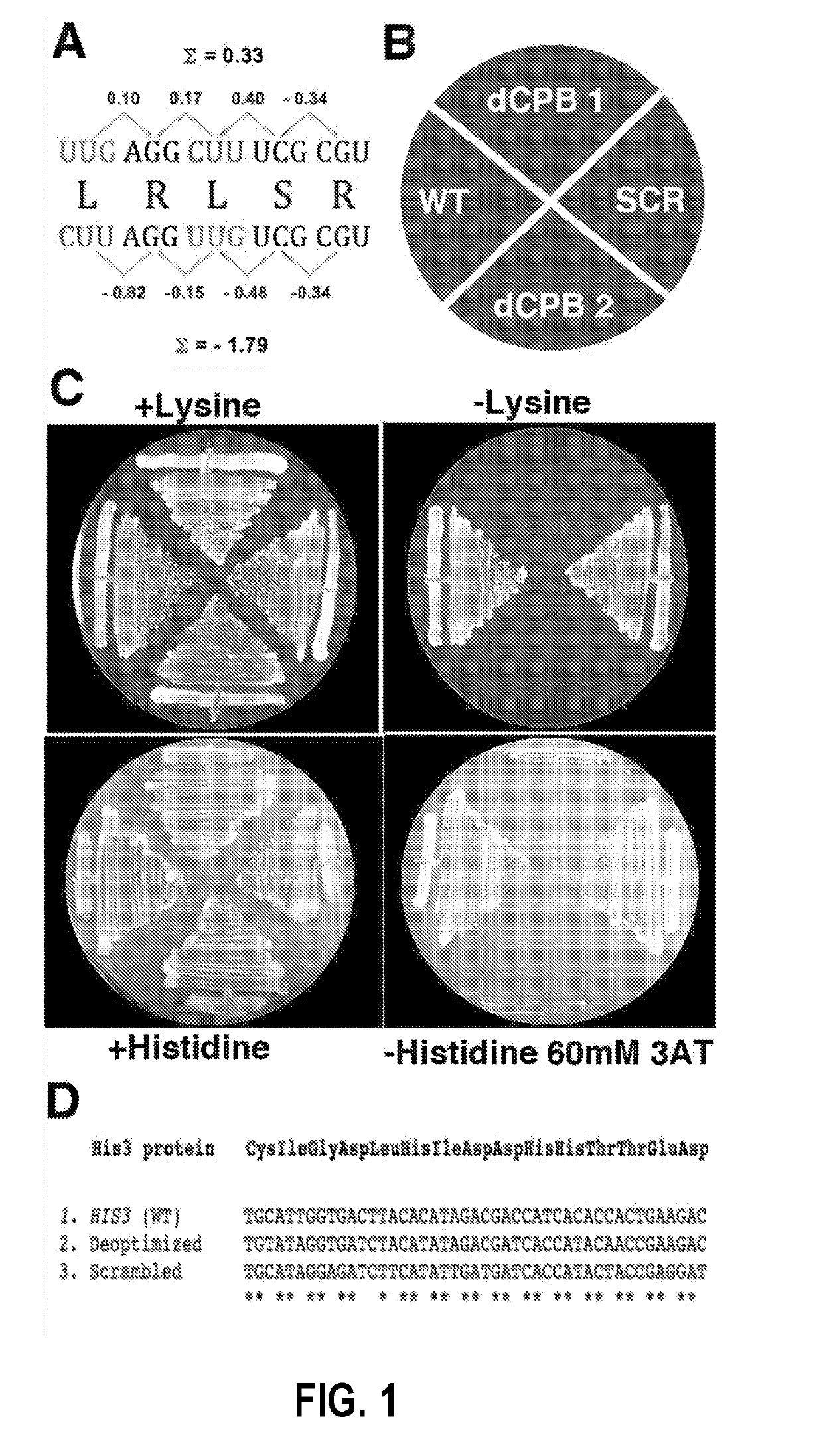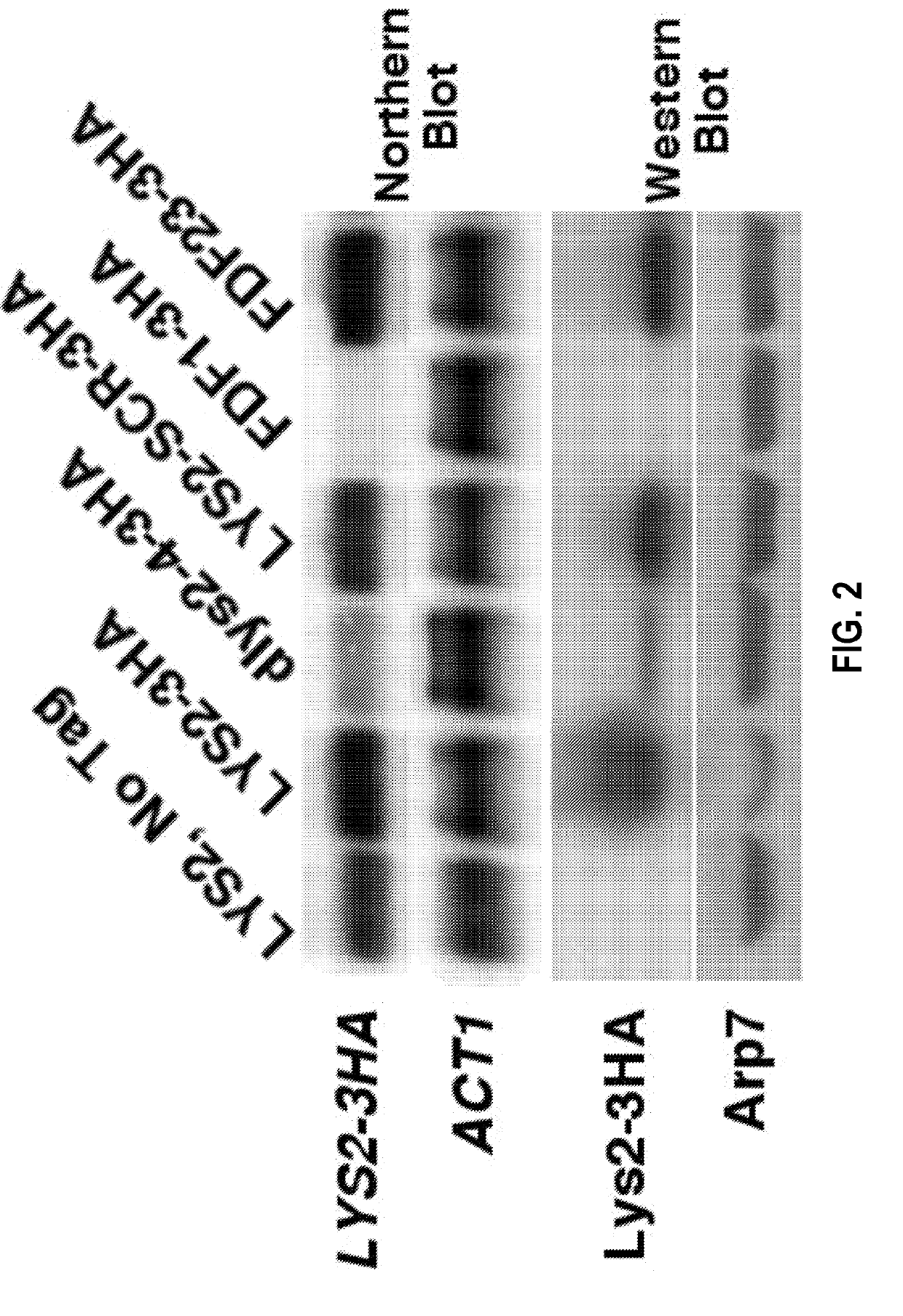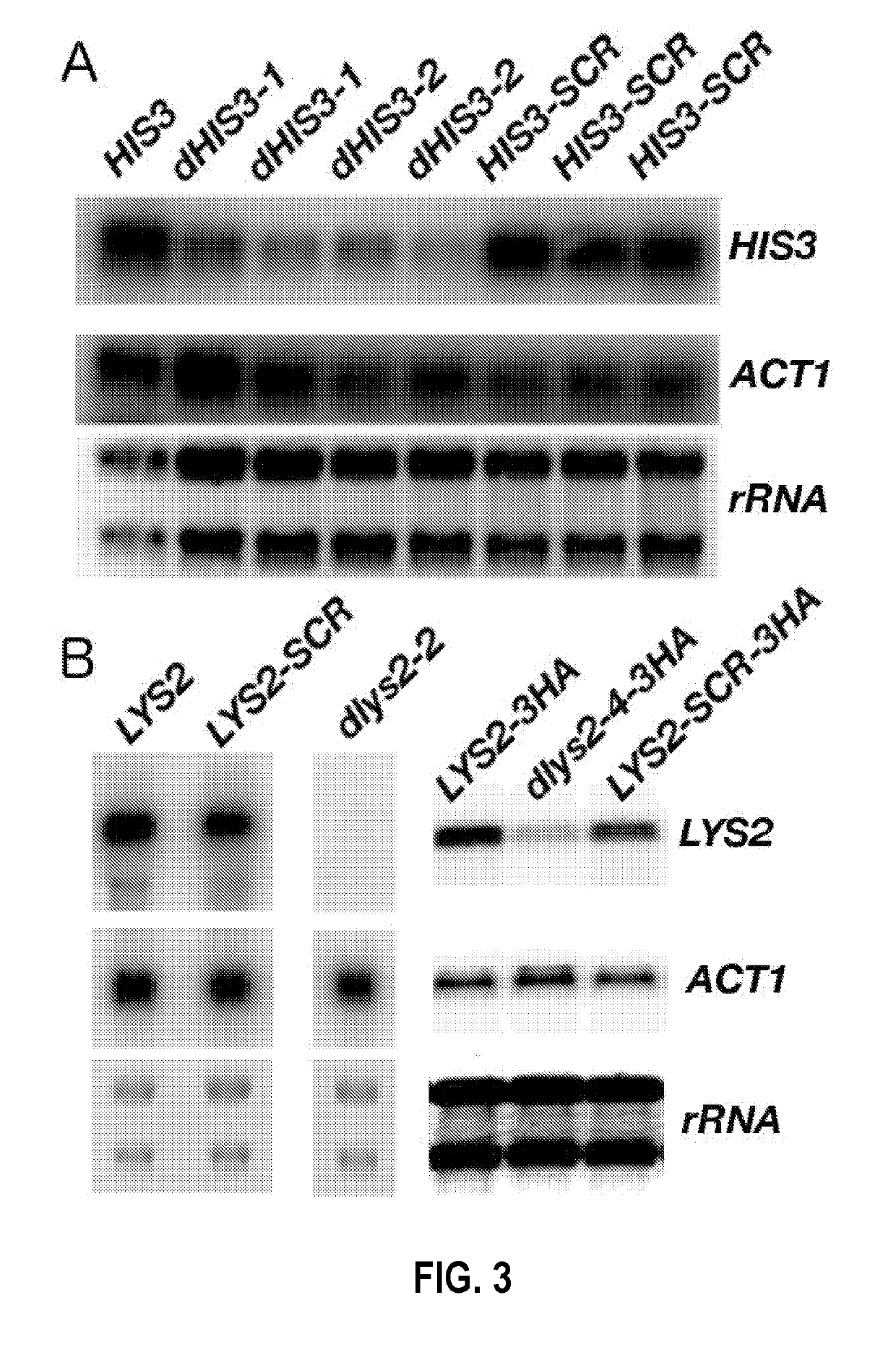Modified protein encoding sequences having increased rare hexamer content
a technology of rare hexamer and protein encoding sequence, which is applied in the field of modified protein encoding sequence, can solve the problems of not all possible encodings are equally used, certain pairs of adjacent codons to be depleted or enriched, and high attenuation of all such viruses
- Summary
- Abstract
- Description
- Claims
- Application Information
AI Technical Summary
Benefits of technology
Problems solved by technology
Method used
Image
Examples
example 1
[0107]Gene Attenuation Using Codon Pair Bias
[0108]To study the mechanism of attenuation by depleted codon pairs, modified genomes of the yeast S. cerevisiae were studied. Attenuation by codon pair deoptimization has not previously been demonstrated in any cellular eukaryote. The two amino-acid biosynthetic genes, HIS3 (220 codons) and LYS2 (1392 codons), for the synthesis of histidine and lysine, respectively, were used.
[0109]A codon shuffling heuristic approach was used to design genes containing depleted codon pairs (Coleman et al., 2008). The software repeatedly “shuffles” the positions of existing synonymous codons within a gene, aiming for shuffles that generate depleted codon pairs. For example, shuffling Leu UUG with Leu CUU as shown in FIG. 1A creates four new codon pairs. Because only codons existing in the wild-type gene are used, this procedure does not change the amino acid sequence of the gene, nor does it change the frequency of any of the codons used in the gene. That...
example 2
[0114]Identification of Frame Dependent (FD) and Frame Independent (FI) Hexamers
[0115]To examine whether the attenuation was connected to defects in translation, the question of whether the effects of codon pairs were specific to the reading frame was examined Here, it was reasoned that if some hexamer XXXXXX corresponding to a rare codon pair were directly destabilizing mRNA, it would do so in any frame (i.e., XXX XXX, nXX XXX Xnn, and nnX XXX XXn would be equally destabilizing). In contrast, if a hexamer were working through translation, it would be destabilizing only in the reading frame (i.e., destabilizing as XXX XXX, but not as nXX XXX Xnn or nnX XXX XXn, which usually specify different codons and tRNAs). Therefore, the codon pair score was adapted to investigate the enrichment / depletion of hexamers in each possible frame.
[0116]Frame Dependent and Frame Independent scores were calculated by equation 1 and 2 respectively:
FDscore(hexamer)=CPSFrame1(hexamer)-CPSFrame2(hexamer)+CP...
example 3
[0122]Attenuation by Rare FD and FI Hexamers
[0123]To investigate whether the two newly-identified classes of depleted codon pairs were functionally significant, new classes of deoptimized LYS2 and HIS3 genes were built to test the function of the Frame Independent and Frame Dependent hexamers. First, genes were deoptimized using only yeast Frame Independent hexamers. One gene design was enriched with yeast FI hexamers only in the reading frame, while a second design was enriched with yeast FI hexamers only in the −1 and −2 frames. One LYS2 and two HIS3 alleles each were synthesized. As predicted, the FI hexamers were moderately and equally attenuating regardless of which frame they are in (FIG. 5). This confirms that these hexamers are (a) attenuating; and (b) reading frame-independent, and therefore probably not working via particular codons, and possibly not working via translation.
[0124]Second, genes were deoptimized using only yeast Frame Dependent (FD) hexamers. One gene design...
PUM
 Login to View More
Login to View More Abstract
Description
Claims
Application Information
 Login to View More
Login to View More - R&D
- Intellectual Property
- Life Sciences
- Materials
- Tech Scout
- Unparalleled Data Quality
- Higher Quality Content
- 60% Fewer Hallucinations
Browse by: Latest US Patents, China's latest patents, Technical Efficacy Thesaurus, Application Domain, Technology Topic, Popular Technical Reports.
© 2025 PatSnap. All rights reserved.Legal|Privacy policy|Modern Slavery Act Transparency Statement|Sitemap|About US| Contact US: help@patsnap.com



